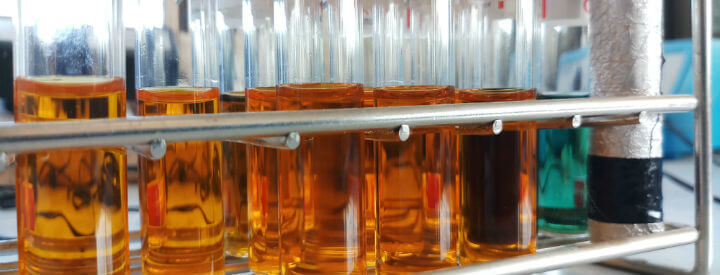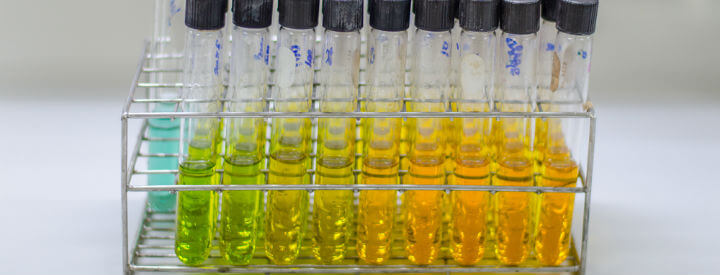How to Reduce Chemical Oxygen Demand (COD) in Wastewater
Written by AOS Treatment Solutions on November 1, 2018

Closely related to Biochemical Oxygen Demand (BOD), Chemical Oxygen Demand (COD) is another important water quality parameter that industrial and municipal authorities should be familiar with to determine the best wastewater treatment methods for their needs.
What Is Chemical Oxygen Demand?
Chemical Oxygen Demand (COD) is the amount of oxygen required to oxidize all soluble and insoluble organic compounds present in a volume of water. COD value is usually expressed in milligrams per liter of water (mg/L).
The Significance of Chemical Oxygen Demand
High chemical oxygen demand in water indicates greater levels of oxidizable organic matter and consequently, a lower amount of Dissolved Oxygen (DO). Critical DO depletion due to organic contamination can kill off aquatic life forms.
What Are the Differences Between COD & BOD?
Many people tend to confuse these two metrics since they are used for the same purpose – to find out the degree of water contamination. However, unlike BOD, COD measures all oxidizable matter in a sample of water, and not just organic compounds. Thus, BOD is typically lower than COD for the same sample.
Moreover, a standard COD test can be done in a few hours, unlike a BOD test which requires a standard 5-day incubation period.
Benefits of Testing for Chemical Oxygen Demand in Wastewater Treatment
A key benefit of knowing the chemical oxygen demand in wastewater treatment is that it helps industrial and municipal clients determine the best method for treatment and the most effective structure for their wastewater treatment facility.
What Is COD in Wastewater?
COD in wastewater refers to the amount of oxygen required to degrade all oxidizable compounds in a measured sample of effluent. You can find the COD value in wastewater by carrying out a COD test.
COD Test
A COD test indirectly measures the concentration of organic compounds in a sample of water by measuring the amount of oxygen required for oxidation of all the organic compounds present. The common technique uses COD vials for measurement and results are typically achieved within 2 – 3 hours.
Can a COD Test Be Used Instead of a BOD Test?
Yes. A standard COD test can typically be done alongside or in place of a BOD test.
Applications of Chemical Oxygen Demand Wastewater Treatment
Four important applications of COD in wastewater treatment are:
- To determine the concentration of oxidizable pollutants present in wastewater
- As an index to determine overall water quality
- To ascertain the effectiveness of wastewater treatment solutions
- To determine the effect of wastewater disposal on the receiving environment
How to Reduce COD in Wastewater

There are various proven methods for COD reduction in wastewater management. Two of the most common techniques for COD wastewater removal are:
- Wastewater separation (coagulation and flocculation)
- COD removal by microbial action.
Wastewater Separation
Wastewater separation techniques remove colloidal solids suspended in wastewater by coagulation and flocculation in wastewater treatment.
In coagulation, a non-toxic agglomerating agent such as Ferric Chloride (FeCl) or alum is added to the water to bring all the suspended particles together to form clumps which can easily be removed from wastewater by filtration.
Flocculation uses a chemical polymer (flocculating agent) to precipitate the clumped particles out of the water by forming larger particles, or flocs. The flocs then undergo the sedimentation process in wastewater treatment by being deposited into a sedimentation tank for further treatment prior to disposal.
Removal of organic matter from wastewater using coagulants and flocculants eliminates the ‘food’ necessary for microbes to thrive, thus reducing the competition for dissolved oxygen with marine life.
COD Removal by Microbial Action
Another efficient technique for COD removal is to introduce bacteria or microorganisms that break down organic compounds present in the wastewater. Microbes in sewage treatment can be aerobic or anaerobic.
Aerobic COD removal introduces microorganisms or bacteria that break down organic compounds present in wastewater into carbon dioxide and water in the presence of air. Aerobic COD removal is ideal for wastewater with COD < 3000 mg/L.
Anaerobic COD removal uses microbes to convert organic compounds in the wastewater to biomass in the absence of oxygen. It is a highly beneficial method because the biofuel generated from the process can be utilized as an alternative energy source for power, heating, and drying applications. Anaerobic COD removal is suitable for wastewater with COD > 2000 mg/L.
Wastewater Treatment Services with AOS Treatment Solutions
Municipalities and industrial clients that need to carry out a COD test, COD removal from wastewater, or determine the best wastewater management plan for their needs can contact the municipal water treatment consultants at AOS for a range of municipal wastewater treatment services.
Serving the industry since 1999, AOS Treatment Solutions provides a robust range of wastewater treatment solutions including wastewater clarification, sludge dewatering, chlorination/de-chlorination, phosphorus removal from wastewater, and odor control.
AOS combines cutting-edge technology with decades of expertise to address the most challenging water treatment needs for a diverse range of clients including private businesses, corporations, and government agencies.
For more information on our services, call (936) 539-0040 or contact us online today for all of your wastewater treatment needs!

